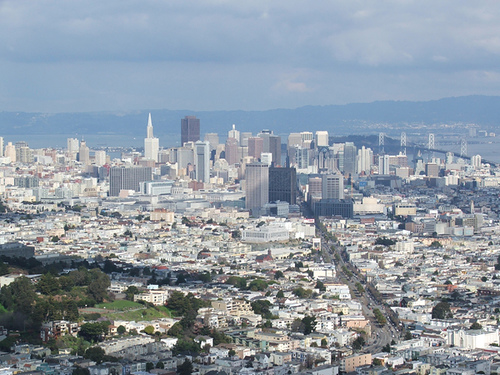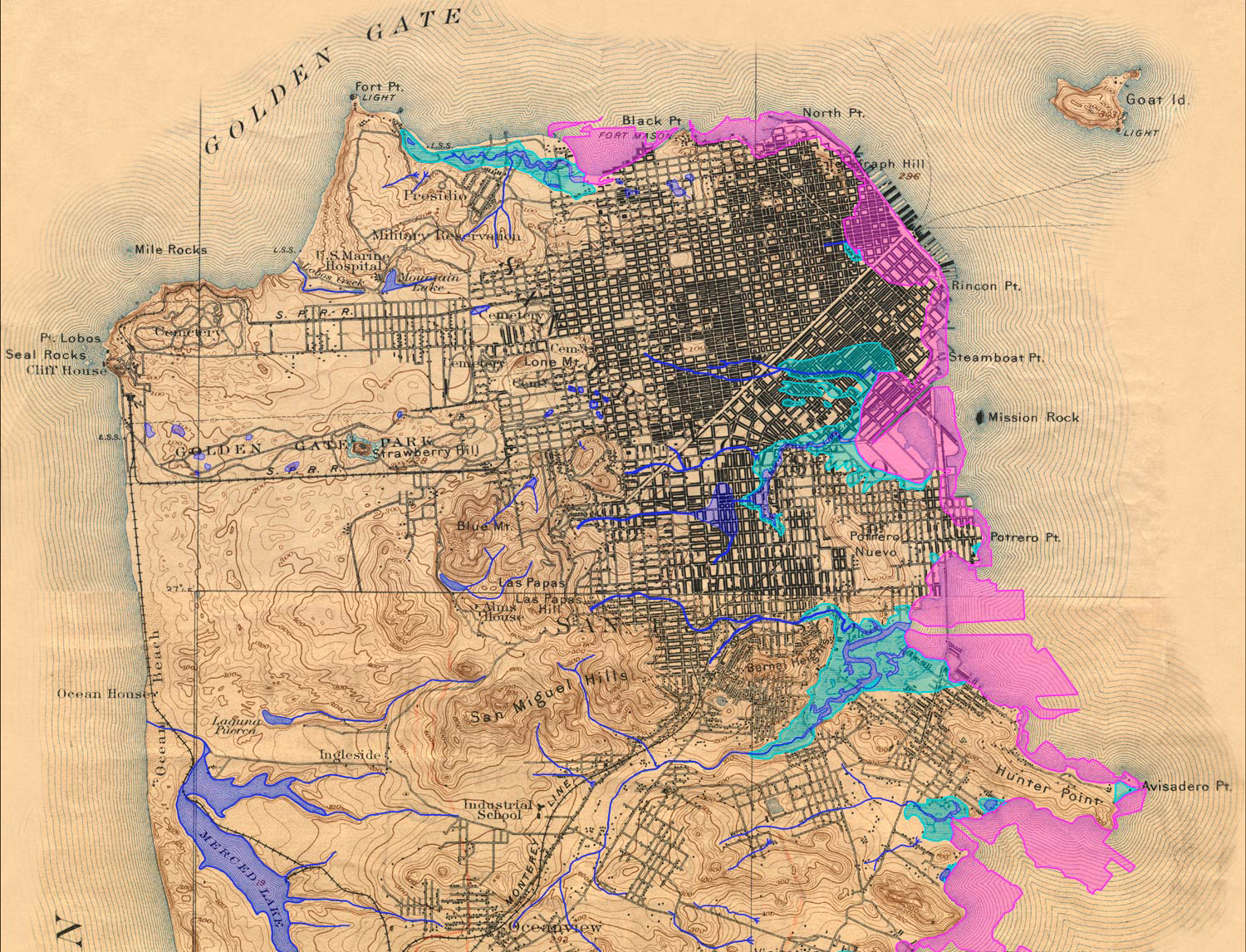Although it may not be obvious at first glance, the bay side of San Francisco is largely artificial. The huge increase in population associated with the California Gold Rush of the mid 1800s resulted in San Francisco becoming the major port on the west coast. In some cases, people seeking riches in the Sierra Nevada headed off to the mountains and simply abandoned their ships in San Francisco. Some of these ships ended up being used as landfill and, year after year, the shoreline along the northern and eastern sides of the city was modified.
The area where Market Street meets the Embarcadero was among the earliest areas to be extended into the bay, but landfill -- a combination of sediment dredged from the bay with rubble -- continued to be used to create new "land" for decades to come.
The map below* shows this modification quite nicely. Original creeks and streams are in blue, marshes in aqua-green, and modern landfill in pink.



